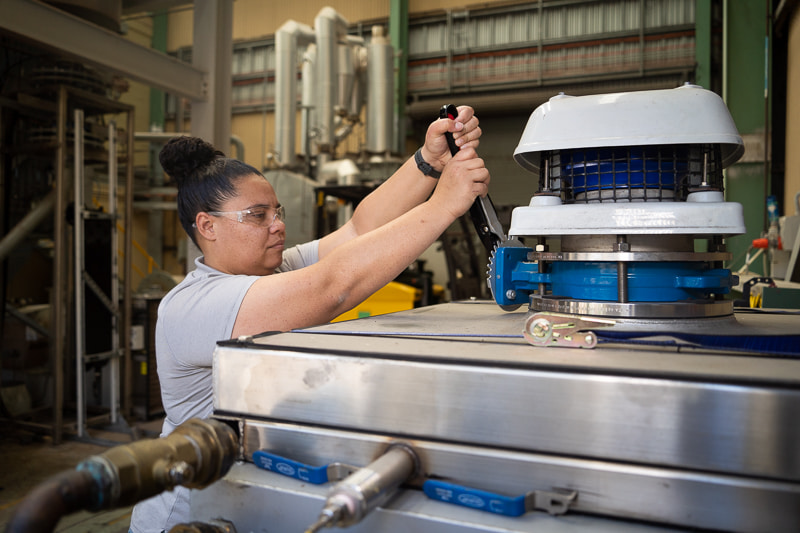
Hydro Harvester
Project: Addressing drinking water shortages in drought-affected communities
The Centre for Innovative Energy Technologies (CINET) received $1.7million from the Future Drought Fund for the project titled, “Hydro Harvester - A fresh way to extract atmospheric water for a drought affected community”, which aims to address critical drinking water shortages in drought affected by producing drinking grade water locally by harvesting atmospheric moisture.
By extracting moisture from the atmosphere, the Hydro Harvester can produce high-quality drinking water when are where it is required most. The funding will help take the technology from its current pilot scale and see the research team design, construct and commission a modular, container-based system that can be deployed to communities under extreme water shortages.
While the main application of the technology is to provide drinking water in times significant drought, it has a range of other applications, such as creating emergency water supplies for livestock to avoid complete destocking during droughts and allow for a faster economic recovery.
Curious to see how the Hydro Harvester could perform in a location near you? The research team has developed an interactive map that allows you to visualise historical rainfall and humidity data from 2000-2021. Additionally, you can explore the potential water production, energy consumption, and electricity cost of the Hydro Harvester at 526 locations around Australia.
The ripple effect of drought
Dr Priscilla Tremain, a Research Associate in the CINET team, explains some of the science behind the Hydro Harvester technology and it's potential impact in this Hippocampus article.
Read here
The University of Newcastle acknowledges the traditional custodians of the lands within our footprint areas: Awabakal, Darkinjung, Biripai, Worimi, Wonnarua, and Eora Nations. We also pay respect to the wisdom of our Elders past and present.
